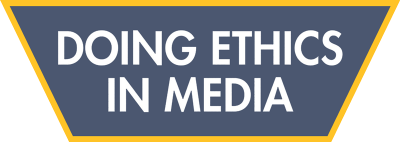By Zoe Norberg
In the past several years, the Associated Press has added chapters ranging from social media to religion, and most recently, data journalism to the categorized section in the back of the AP Stylebook. Nevertheless, an in-depth chapter about the proper usage of disability language is absent from the stylebook––instead, this topic is covered in an entry spanning less than half of a page.
It is astounding that such a wide-spanning category as disability––which affects nearly 20 percent of the United States population, according to the National Service Inclusion Project––would be absent from the industry standard publication for journalistic style.
Especially in recent years, the Associated Press has made efforts to represent people within minority groups such as different nationalities, races, sexual orientations and religions; however, the news agency has fallen short in its coverage of people with disabilities within the style guide.
To compensate for the gaps left by the AP Stylebook, the National Center on Disability and Journalism (NCDJ) has created their own Disability Language Style Guide to assist journalists with the coverage of people living with disabilities. This guide contains specific wordage to use when discussing a person with almost any type of disability, including physical disabilities, hearing and visual impairments, mental and cognitive disabilities and seizure disorders. Additionally, it shows how the NCDJ’s standard aligns with the AP Stylebook’s suggestions––if there are any.
Diversity is one of the most important elements of modern journalism––so why does the AP Stylebook put so little effort into assuring that people with disabilities are properly represented in the media?
Without proper support and representation by national organizations such as the Associated Press, the disability community loses their voice and their right to decide how the public as a whole refers to them in news media.
Kristina Hicks, an intern with the University of Alabama’s Men’s Wheelchair Basketball team, said that this disparity is one of the biggest frustrations within the disability community.
“You wouldn’t use incorrect language to describe race or to describe sexuality,” Hicks said. “Just as those things aren’t a choice, having a disability isn’t a choice.”
In the same way that a person’s skin color or sexual orientation is a part of their identity, so is a person’s disability. By failing to refer to a person with a disability in the way they want to be represented, journalists are failing to acknowledge the identities of people in the disability community. In order to follow a commitment to diversity, news organizations must consider all of the people in their community. This includes the 48 million Americans who live with a disability.
In the SPJ Code of Ethics, the principle “Minimize Harm” directly states, “Ethical journalism treats sources, subjects, colleagues and members of the public as human beings deserving of respect.”
“[People living with disabilities] deserve just as much respect as any human beings, because they are,” Hicks said.
Seeing as this is the case, the AP Stylebook is clearly falling flat in its efforts to support and respect a large portion of the public that it serves, which is an ethical failure by most journalistic standards.
Additionally, the Associated Press is failing the public by neglecting to follow through with its own statement of ethical principles, which proclaims that “the news organization should guard against inaccuracies, carelessness, bias or distortion…”
It is careless that a national news organization would leave parts of the disability community out of its standardized language guide for the journalism industry. Representation is a key factor in promoting diversity and equality throughout the media, and facilitating this representation by including all of the proper terms in the AP Stylebook is the first step to a more diverse and inclusive industry.
